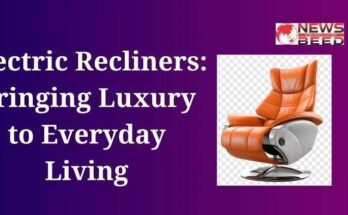Maintaining good oral hygiene is crucial for overall health and well-being. One of the key components of oral hygiene is regular toothbrushing. When it comes to toothbrushes, there are two primary options: electric toothbrushes and manual toothbrushes. Both have their advantages and disadvantages, and the choice between them often depends on individual preferences and needs. In this article, we will delve into the benefits of electric toothbrushes compared to manual toothbrushes, exploring various aspects of each to help you make an informed decision about which type of toothbrush is right for you.
1. Cleaning Efficiency:
Electric Toothbrush:
Electric toothbrushes are known for their superior cleaning efficiency. They typically feature oscillating, rotating, or sonic brush heads that can provide thousands of brush strokes per minute. These rapid movements help dislodge plaque and debris from the teeth and gums more effectively than manual brushing alone.
Many electric toothbrushes also come with built-in timers or pressure sensors to ensure that users brush for the recommended two minutes and avoid excessive pressure that could harm the gums. This feature helps improve overall cleaning efficiency by promoting proper brushing techniques.
Also, Read This: What is Digital Marketing in Hindi
Manual Toothbrush:
Manual toothbrushes rely entirely on the user’s manual dexterity and brushing technique. While they can be effective when used correctly, it can be challenging to maintain the recommended brushing time and pressure consistently. As a result, manual toothbrushes may not be as efficient at removing plaque and preventing gum disease as their electric counterparts.
2. Plaque Removal:
Electric Toothbrush:
Studies have shown that electric toothbrushes are more effective at removing plaque and reducing the risk of gum disease and cavities compared to manual toothbrushes. The rapid and consistent brush movements of electric toothbrushes can reach areas that might be difficult to access with a manual toothbrush, such as the back molars and between teeth. This improved plaque removal can lead to better oral health outcomes.
Manual Toothbrush:
Manual toothbrushes can effectively remove plaque when used correctly. However, achieving the same level of consistency and thoroughness as an electric toothbrush can be challenging, especially for children and individuals with limited dexterity. Manual toothbrushes require users to apply the right amount of pressure and use proper brushing techniques consistently to achieve optimal results.
3. Gum Health:
Electric Toothbrush:
Electric toothbrushes can contribute to better gum health. Many models are designed with soft and gentle bristles to protect the gums from damage. Additionally, the built-in pressure sensors in some electric toothbrushes can alert users if they are brushing too hard, helping prevent gum recession and irritation.
The consistent and thorough cleaning provided by electric toothbrushes can also help reduce the risk of gum inflammation and gingivitis, making them a suitable choice for individuals with sensitive gums or a history of gum problems.
Manual Toothbrush:
With manual toothbrushes, gum health largely depends on the user’s brushing technique and the choice of bristle hardness. Some individuals may apply excessive pressure, leading to gum irritation and recession. Others may not brush gently enough, leaving behind plaque and bacteria that can contribute to gum problems.
4. Convenience:
Electric Toothbrush:
Electric toothbrushes are generally more convenient to use. They require less physical effort because the motorized brush head does most of the work. Many electric toothbrushes also have features like timers, multiple brushing modes, and smartphone connectivity to help users track their oral hygiene routines and progress.
For people with limited dexterity, such as those with arthritis or mobility issues, electric toothbrushes can be particularly beneficial, as they reduce the need for vigorous brushing movements.
Manual Toothbrush:
Manual toothbrushes are widely available and do not require batteries or charging. They are lightweight and portable, making them suitable for travel. However, they do rely heavily on the user’s manual dexterity and effort, which can be a drawback for some individuals.
5. Cost:
Electric Toothbrush:
Electric toothbrushes typically have a higher upfront cost compared to manual toothbrushes. There is also an ongoing cost associated with replacing the brush heads or batteries. However, the long-term benefits in terms of oral health may outweigh the initial investment for many users.
Manual Toothbrush:
Manual toothbrushes are generally more affordable, making them a budget-friendly option for most people. The only recurring cost is the purchase of replacement toothbrushes, which are relatively inexpensive.
6. Battery Life and Maintenance:
Electric Toothbrush:
Electric toothbrushes are powered by rechargeable batteries or replaceable batteries. The battery life varies depending on the model and frequency of use. Rechargeable electric toothbrushes can be convenient, but they require regular charging. Some models come with charging stands or travel cases for added convenience.
Maintaining an electric toothbrush involves replacing the brush head every few months and ensuring that the charging components are in good condition. While the initial cost may be higher, maintenance costs are relatively low.
Manual Toothbrush:
Manual toothbrushes have no battery-related maintenance or charging requirements. However, users must replace them regularly to ensure effective cleaning. The bristles of manual toothbrushes tend to wear out more quickly than electric brush heads, so they may need to be replaced more frequently.
7. Eco-Friendliness:
Electric Toothbrush:
Electric toothbrushes, especially those with disposable batteries, can generate more waste compared to manual toothbrushes. The replacement brush heads, packaging, and electronic components contribute to environmental concerns. Some electric toothbrush manufacturers are making efforts to reduce their environmental impact by offering recyclable or biodegradable components.
Manual Toothbrush:
Manual toothbrushes, being simpler in design, typically have a smaller environmental footprint. They are made from materials like plastic and nylon bristles, which are not easily biodegradable. However, there are eco-friendly toothbrush options available with biodegradable handles and bristle materials.
8. Customization and Features:
Electric Toothbrush:
Electric toothbrushes often come with various features and customization options to cater to individual preferences. These may include different brushing modes (e.g., sensitive, whitening, gum care), pressure sensors, timers, and even smartphone apps that provide real-time feedback on brushing habits. These features can enhance the brushing experience and motivate users to maintain better oral hygiene.
Manual Toothbrush:
Manual toothbrushes offer limited customization options compared to electric toothbrushes. While there are variations in bristle designs and hardness levels, they do not typically offer additional features like timers or pressure sensors. Manual toothbrushes are straightforward and easy to use without any advanced settings.
9. Children and Special Needs:
Electric Toothbrush:
Electric toothbrushes can be particularly useful for children, as they often find the vibrations and novelty of the brush enjoyable. Many electric toothbrush models come in child-friendly designs and may include timers or music to make brushing fun and engaging for kids. Electric toothbrushes can also benefit individuals with special needs or limited dexterity, as they require less manual effort.
Manual Toothbrush:
Manual toothbrushes can be suitable for children and individuals with special needs as well. However, it may be more challenging for children to maintain proper brushing techniques with a manual toothbrush, and individuals with limited dexterity may find it harder to brush effectively.
10. Preference and Comfort:
Electric Toothbrush:
The choice between electric and manual toothbrushes often comes down to personal preference and comfort. Some people simply prefer the sensation and convenience of an electric toothbrush, while others feel more in control with a manual toothbrush. It’s essential to choose the type of toothbrush that you are most comfortable with, as this can encourage consistent brushing habits.
Read Also:- What is Chatgpt Step by Step
Manual Toothbrush:
Manual toothbrushes offer a familiar and straightforward brushing experience. Some people prefer the tactile sensation of brushing manually and feel that they can exert more control over their brushing technique. Comfort and familiarity can play a significant role in the choice of a toothbrush.
Conclusion:
Both electric and manual toothbrushes have their own set of advantages and disadvantages. The choice between the two ultimately depends on individual preferences, oral health needs, and lifestyle factors. Electric toothbrushes tend to offer superior cleaning efficiency, better plaque removal, and enhanced gum health. They are also more convenient for some individuals and often come with additional features to motivate and track brushing habits. However, they come with a higher upfront cost and may generate more waste.
On the other hand, manual toothbrushes are budget-friendly, readily available, and environmentally friendly. They require no charging or battery replacements and are suitable for travel. However, achieving the same level of cleaning efficiency and consistency as electric toothbrushes may be more challenging for some users.
Ultimately, the most important aspect of oral hygiene is not the type of toothbrush you use but how effectively you use it. Proper brushing technique, regular flossing, and routine dental check-ups are key to maintaining good oral health, regardless of whether you choose an electric or manual toothbrush. It’s advisable to consult with your dentist or dental hygienist to determine which type of toothbrush aligns best with your specific needs and to receive guidance on maintaining a healthy oral care routine.




